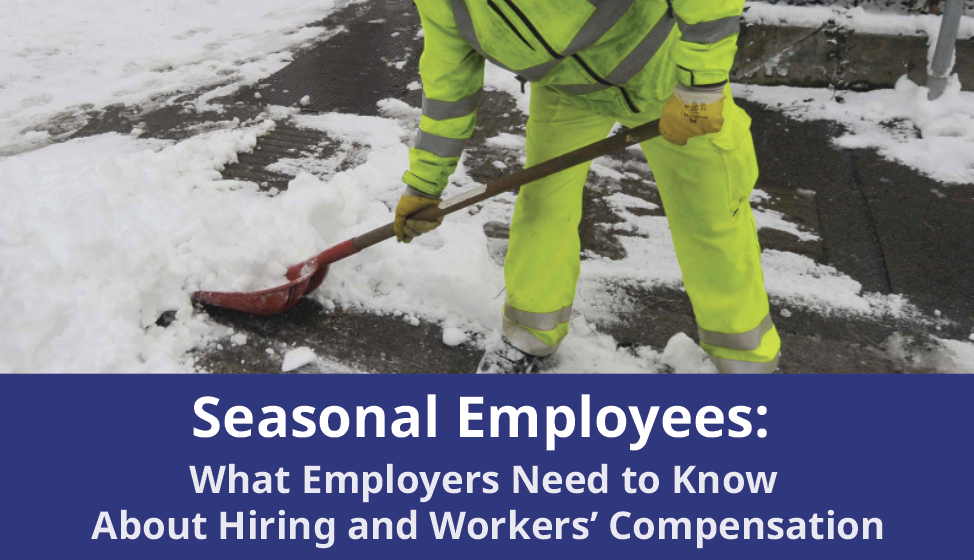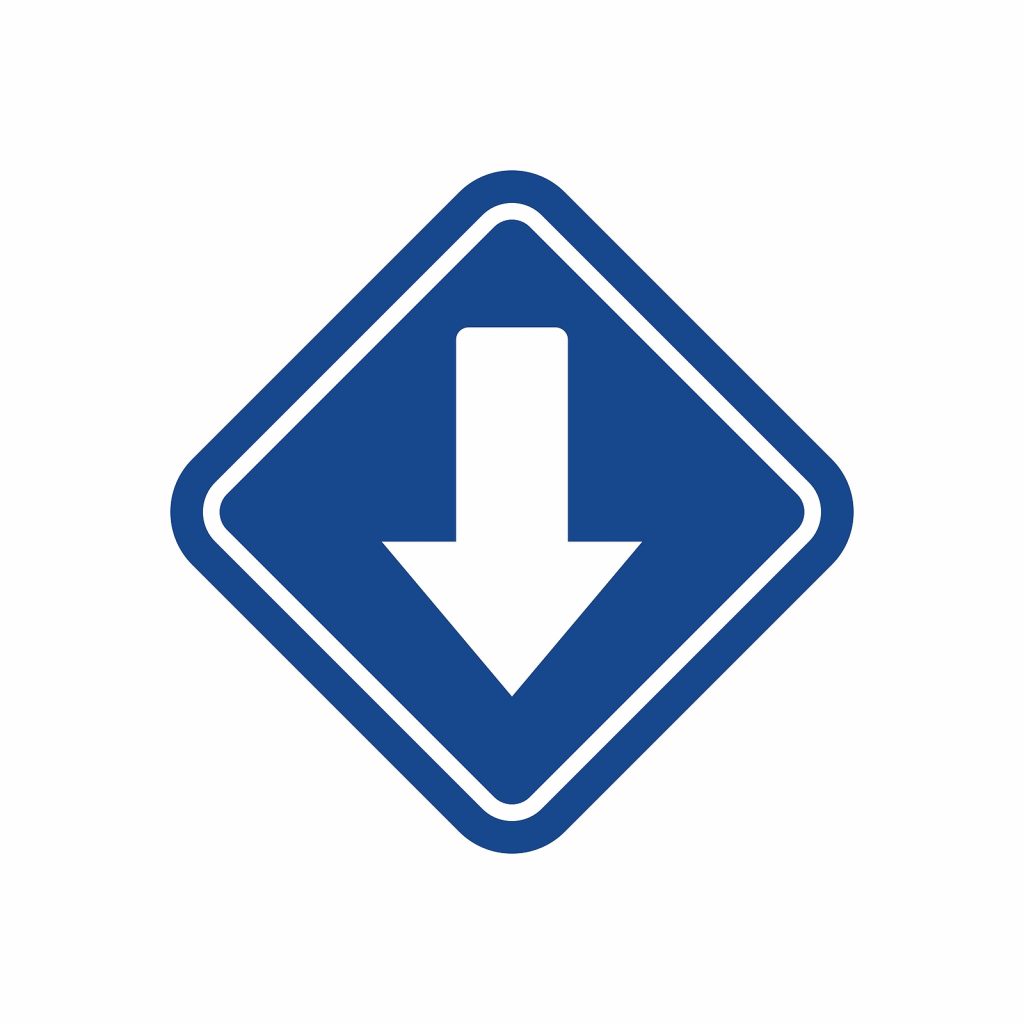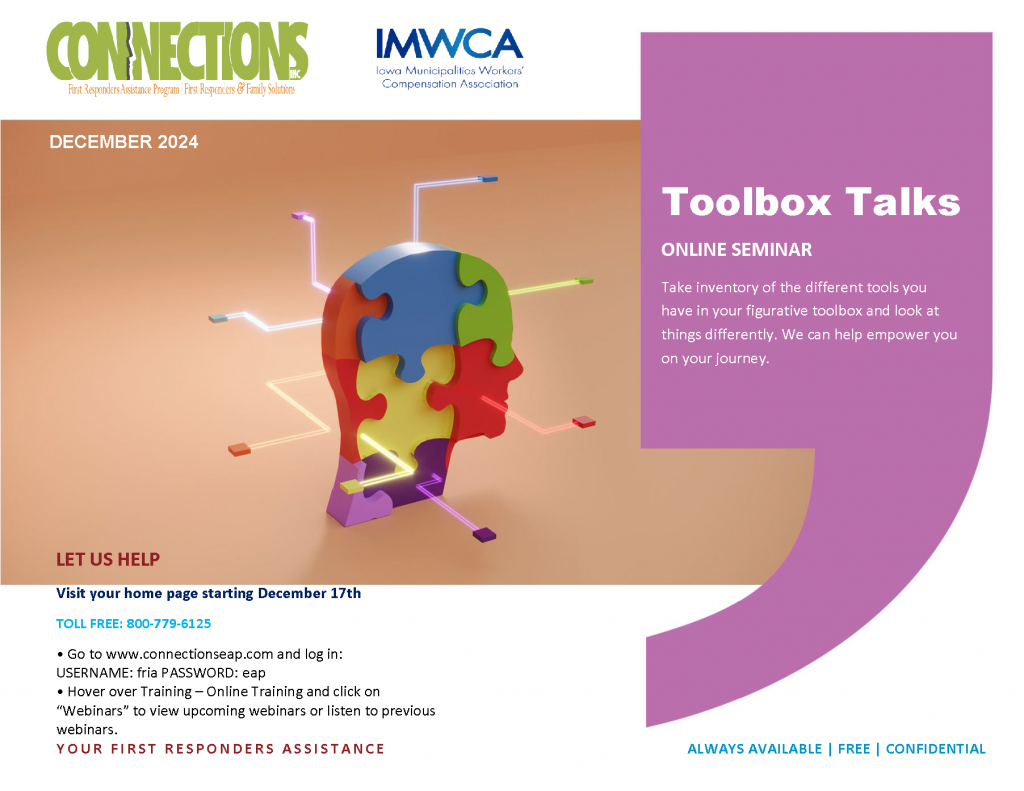
Many of our members need extra staff to meet demand during specific times of the year. Most hire seasonal employees in the summer to work as lifeguards at pools or in the parks department for mowing and string trimming. However, some members also hire seasonal staff in the winter. Those with public works and secondary roads departments require additional personnel for snow plowing.
A seasonal employee is a temporary worker who is not on the payroll year-round. While many people assume that seasonal employees are always part-time, this is not always the case. Seasonal employment is distinct from temporary or part-time work, as it is specifically related to seasonal demand or events, whereas temporary and part-time jobs are not necessarily tied to a specific season.
If a seasonal employee is injured at work, they still need to report the claim to Company Nurse as usual. Employers need to remember that the end of the season does not mean the end of the claim for seasonal employees with a compensable workers’ compensation claim.
For example, if you have a seasonal employee with a low back injury who is undergoing physical therapy and performing light-duty work, the situation may unfold as follows: when the season ends and their employment is terminated, if the employee is still under work restrictions, they will likely be entitled to temporary total disability benefits. These indemnity benefits must be paid until the injured worker is able to return to full duty or reaches maximum medical improvement. Additionally, medical benefits will continue during this period.
As with any employee it is recommended that you are diligent in your hiring practices and continue to provide light-duty work until the injured worker is placed at maximum medical improvement.
OSHA Reporting – Start Now
The Occupational Safety and Health Administration (OSHA) Recordkeeping deadline is approaching quickly.
OSHA requires any employer with 11 or more employees (people paid through payroll, including VFF, elected officials, etc.) to track reportable injuries annually. There are three recordkeeping forms needed:
- The OSHA 300 Form, Log of Work-Related Injuries and Illnesses, requires the employer to record information about every work-related death, injury, or illness that meets OSHA recordkeeping requirements.
- The OSHA 300A Form, Summary of Work-Related Injuries and Illnesses, summarizes the information on the 300 log. The annual summary must be:
- Posted by February 1 and remain posted until April 30 at each establishment (location at the employer)
- Posted in areas where other notices are customarily placed
- Certified (signed) by a company executive stating that the information is correct and complete to the best of the employer’s ability
- Suppose no cases are recorded during the calendar year. In that case, the OSHA 300A summary must still be posted with zeros in all spaces provided on the form at each establishment (location at the employer).
The OSHA 301 Form, Injury and Illness Incident Report, is the first report of injury or illness form report.
IMWCA has tools to help you with your OSHA recordkeeping needs. The initial phone call to the Company Nurse generates your First Report of Injury and meets the OSHA 301 Form requirement.
The IMWCA tool is a website, RTWNow, with a Tracker tool. This online tool makes OSHA recordkeeping an easy process that can be completed during the year with very little work from the employer. The Company Nurse’s initial report, the First Report of Injury, syncs with Tracker to input all the initial claim data into the Tracker database. Your Company Nurse’s initial reports reside in the Tracker database. You must enter or “Track” the appropriate activity for each claim, such as days away from work or restricted or modified duty. Tracker has a reporting tool that will build the 300 and 300A, saving time and the chance of data entry errors.
To learn more visit:

NCCI Rates FY25/26
The Iowa Insurance Commissioner approved the rate filing proposed by the National Council on Compensation Insurance (NCCI), the rate-setting organization for Iowa and 37 other states. The approved filing calls for an average 7.36% overall rate decrease for municipal codes used by IMWCA members. These new rates will be implemented on the July 1 renewals. The new rates will be available on our website on December 20. This allows members to estimate premiums based on projected payroll in each class code. The IMWCA Board of Trustees will meet on January 30 to review the Discount Rating Plan and Good Experience Bonus Program.

Key Dates Calendar
Stay on top of upcoming deadlines and events in 2025, by subscribing to IMWCA’s Key Dates Calendar. The calendar includes OSHA reporting deadlines, renewal and audit timelines, and relevant training.

Thank You for Stopping By!
We appreciate everyone who visited our booth at the 2024 ISSDA Winter School in Des Moines. It was great connecting with you! If you have questions or want to follow up, don’t hesitate to reach out.





